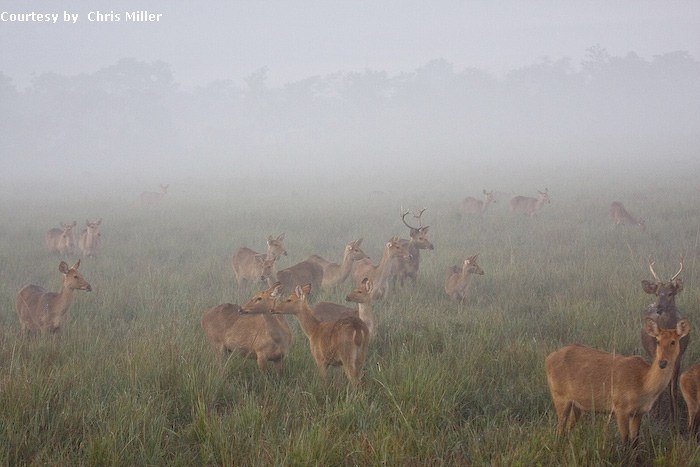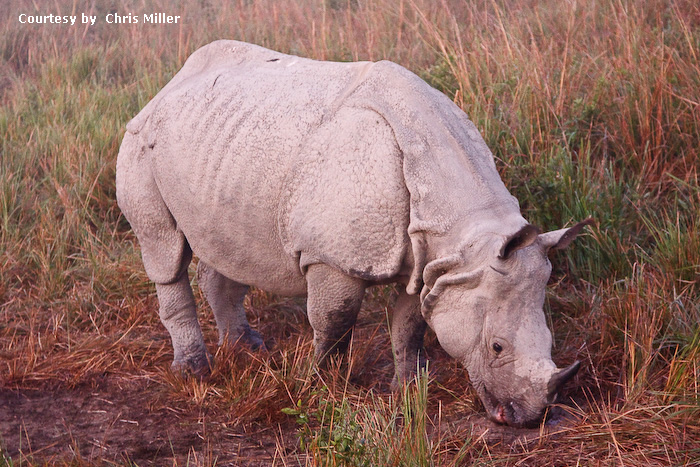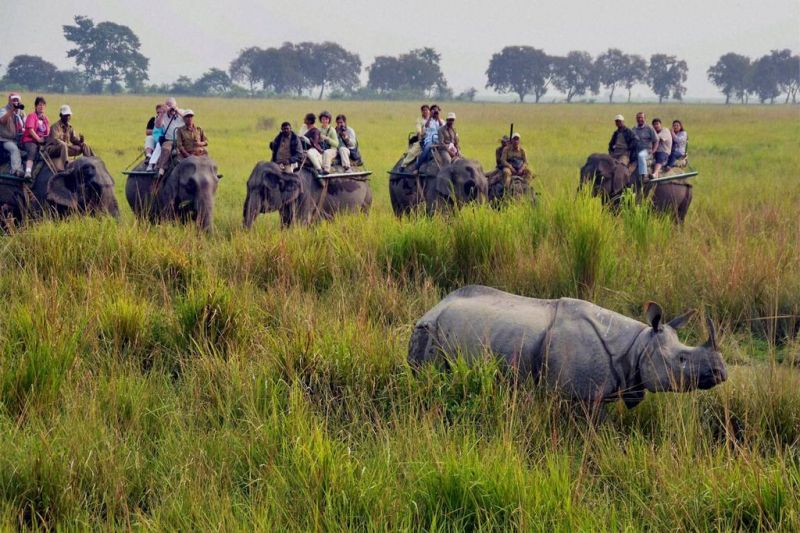There are about 106 national parks in India covering an area of 44,372.42 sq. km which is 1.35% of the geographical area of the country.
In the heart of Assam, this park is one of the last areas in Eastern India undisturbed by human presence. It is inhabited by the world’s largest population of one-horned rhinoceroses and many mammals including tigers, elephants, panthers, as well as thousands of birds.
Kaziranga National Park is a protected area in the northeast Indian state of Assam. Spread across the floodplains of the Brahmaputra River, its forests, wetlands and grasslands are home to tigers, elephants and the world’s largest population of Indian one-horned rhinoceroses. Ganges River dolphins swim in the park’s waters. It’s visited by many rare migratory birds, and gray pelicans roost near Kaziranga village.

As you go on an elephant ride, you will run into some heavily armoured, prehistoric looking one-horned rhinoceros, nonchalantly grazing before you barely looking up to give you the time of day. Do consider the sight that belies the extraordinary story behind their survival, here on the banks of the mighty Brahmaputra River. These 430 square kilometres of swamps, sandy riverine islands and waves of tall elephant grass which exist over a flat and broad plain, interspersed with forests of moist tropical trees, floods dramatically ever year and is key to its semi aquatic existence. A World Heritage Site, the park today hosts two-thirds of the world’s greater one-horned rhinoceros, according to the latest census in March 2015 a total of 2,401 - a remarkable feat considering the species was on the verge of extinction, with only 12 left in 1903.
In 1908, Kaziranga was designated a Reserve Forest with pioneering protection efforts underway, before being given official park status in 1974. Within these watery borders remain herds of now endangered wild buffalo, Asian elephant, swamp deer, capped langur and Asia’s only ape - the hoolock gibbon, which lives in the canopies of the higher bordering forests of Karbi Anglong.
It’s also one of India densest tiger habitats with recent estimations of over 80 individuals - but you will be lucky to spot them. Keep binoculars at the ready for this is rare Bengal florican country and a host of wetland and migrant bird species, specifically in the winter months can be enjoyed on elephant back, from a watchtower, by jeep, or in some parts, on foot with an experienced guide. The park has three tourism zones - Kohora, Bagora and Agartoli ones.

Kaziranga was inscribed for being the world’s major stronghold of the Indian one-horned rhino, having the single largest population of this species, currently estimated at over 2,000 animals. The property also provides habitat for a number of globally threatened species including tiger, Asian elephant, wild water buffalo, gaur, eastern swamp deer, Sambar deer, hog deer, capped langur, hoolock gibbon and sloth bear. The park has recorded one of the highest density of tiger in the country and has been declared a Tiger Reserve since 2007. The park’s location at the junction of the Australasia and Indo-Asian flyway means that the park’s wetlands play a crucial role for the conservation of globally threatened migratory bird species. The Endangered Ganges dolphin is also found in some of the closed oxbow lakes.
The presence of the busy national highway No. 37 along the southern border of Kaziranga has brought increased settlements which disturb wildlife movements in this landscape. While river migration has also resulted in the loss of some 5,000 ha of forest land from 1925 to 1986, the national park has been enlarged to the north to include part of the River Brahmaputra, although this area has not yet been proposed for inclusion within the World Heritage property. Maintenance of functional connectivity between the park and Karbi Anglong Hills, and the formation of a buffer zone to the south of the park would greatly add to the integrity of the park.
The park has been declared as a Tiger Reserve in 2007 and there have been six additions to the park area which has improved management and protection efforts. The property benefits from government support at both national and regional levels as well as involvement of national and international conservation organisations. The site is managed under the administration of the Assam Forest Department, guided by a legally approved Management Plan. The present state of protection and conservation of the property is regarded as one of the best in India. However, key threats include rhino poaching, riverbank erosion, invasive species, tourism pressure, heavy highway traffic, and livestock grazing.

The management needs a long-term strategy for dealing with tourism-related issues, research and monitoring for habitat and wildlife, human-wildlife conflicts and boundary issues relating to the addition areas to the national park. In order to ensure sustained financial flows which are essential for the functioning of the park, the constitution of the Kaziranga Tiger Conservation Foundation has been a landmark measure. The management has also taken steps towards improving infrastructure and staff welfare provisions. Strengthening institutional linkages with other government departments and line agencies for the benefit of the local communities in the fringe villages around the property remains an important management objective for the park authorities.
Photos from the official website of the National Park


